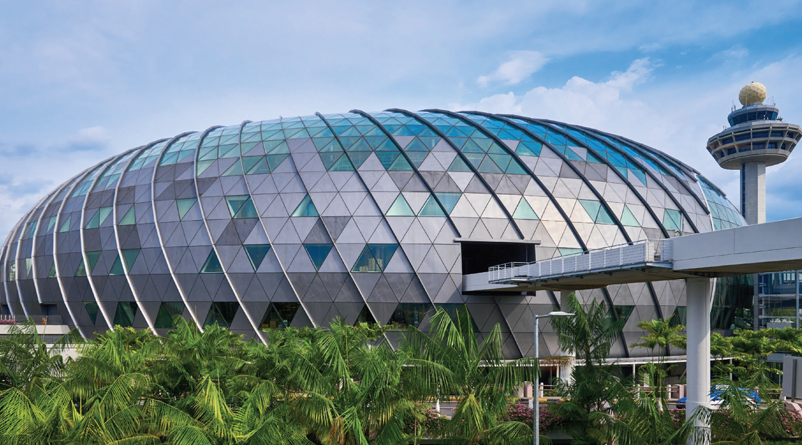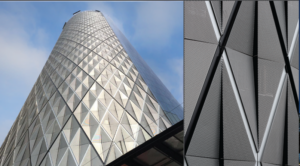
In modern construction, safety and style go hand in hand. When designing a building’s exterior, fire retardant materials are a top choice for creating both aesthetically pleasing and highly secure structures. These materials not only protect against fire hazards but also enhance the durability and energy efficiency of buildings. In this blog, we’ll explore the importance of fire retardant materials, their key applications, and how they contribute to stylish, safe exteriors.
What Are Fire Retardant Materials?
Fire retardant materials are specially designed to resist ignition and slow the spread of fire. These materials are used in various layers of construction, particularly in façade cladding and composite panels. By incorporating materials like honeycomb aluminum sheets and aluminum composite panels, builders can create exteriors that are both fire-safe and visually appealing.
Why Are Fire Retardant Materials Essential for Exteriors?

Aluminum Panels
Fire incidents can cause significant damage to buildings, particularly in high-rise structures. Innovative Fire Protection Materials provide a critical layer of safety, ensuring occupant protection and minimizing property damage. Here’s why they’re essential:
- Safety: Reduce the spread of flames, providing valuable evacuation time.
- Durability: Resist high temperatures, maintaining structural integrity during fires.
- Compliance: Meet strict building codes and safety regulations.
- Versatility: Used in various architectural projects, from residential homes to commercial high-rises.
Key Features of Fire Retardant Materials
1. High-Temperature Resistance
Materials like honeycomb aluminum panels and aluminum composite sheets are engineered to withstand extreme heat, ensuring that buildings remain stable during fire incidents.
2. Core Material Protection
Many fire retardant materials feature a specially designed core, such as the honeycomb core, that provides additional strength and insulation.
3. Energy Efficiency
By improving insulation, composite roof panels with fire-resistant properties help regulate indoor temperatures, reducing energy consumption.
4. Stylish Finishes
Modern fire retardant materials come in various textures, colors, and patterns, allowing architects to create stunning designs without compromising safety.
Applications of Fire Retardant Materials
1. Façade Cladding for High-Rise Buildings
In tall structures, the risk of fire spreading rapidly along the facade is a significant concern. Aluminum cladding facades with fire retardant properties act as a protective shield, ensuring safety.
2. Aluminium Composite Panels for Exteriors
Aluminium composite panels are lightweight yet strong, making them ideal for creating sleek, modern exteriors that are also fire-resistant.
3. Honeycomb Aluminum Panels in Architectural Projects
The honeycomb aluminum panel is a popular choice in façade design for its combination of style and fire safety. Its lightweight design makes installation easier while providing excellent durability.
4. Composite Roof Panels for Additional Protection
Composite roof panels not only protect against fire but also improve a building’s energy efficiency, making them a dual-purpose solution.
5. Interior Applications
While primarily used for exteriors, fire retardant materials like flame retardant fabrics are also incorporated into interior designs for added safety.
Discover ALUCORE® by ALUCOBOND® for premium honeycomb panels. Visit ALUCOBOND®.
Creative Design Possibilities with Fire Retardant Materials
1. Customized Textures and Patterns
Fire retardant materials such as aluminum composite sheets can be customized with unique patterns or textures, allowing architects to experiment with creative façade design.
2. Layered Cladding Systems
Using roll-formed aluminum cladding facades, designers can create layered exteriors that offer both depth and fire protection.
3. Colorful Finishes
Modern fire retardant materials are available in a wide range of colors, enabling buildings to make bold, stylish statements.
Advantages of Using Fire Retardant Materials
1. Enhanced Safety
Fire retardant materials provide critical protection against fire, ensuring the safety of building occupants.
2. Improved Durability
These materials are designed to withstand harsh weather and high temperatures, ensuring long-lasting performance.
3. Compliance with Regulations
Incorporating fire-resistant materials ensures that buildings meet local and international safety standards.
4. Eco-Friendly Options
Materials like honeycomb aluminum sheets are recyclable, making them a sustainable choice for modern construction.
5. Cost Efficiency
While the initial investment may be higher, fire retardant materials reduce long-term maintenance costs and potential fire-related damages.
Factors to Consider When Choosing Fire Retardant Materials
- Type of Property: Residential, commercial, or industrial buildings may have different fire safety requirements.
- Building Height: High-rise buildings often require materials with higher fire resistance, such as honeycomb cores.
- Climate Conditions: Weather-resistant materials are essential in regions with extreme temperatures or humidity.
- Aesthetic Goals: Look for materials that combine safety with visual appeal, such as aluminum composite panels.
Installation Techniques for Fire Retardant Materials
1. Cutting and Routing
Fire retardant materials like aluminum composite sheets can be easily cut and routed into various shapes, offering flexibility in design.
2. Pierce Fix Systems
This technique ensures that cladding materials are securely fixed, preventing gaps that could compromise fire safety.
3. Layered Installation
For enhanced protection, use layered systems that combine façade cladding with additional fire-resistant coatings.
FAQs About Fire Retardant Materials
- What are fire retardant materials?
Fire retardant materials resist ignition and slow the spread of fire, ensuring building safety and compliance with regulations. - Where are fire retardant materials used?
They are commonly used in facades, cladding systems, roofing, and interior applications like flame retardant fabrics. - Are fire retardant materials eco-friendly?
Yes, many materials like honeycomb aluminum sheets and aluminum composite panels are recyclable. - How do fire retardant materials enhance safety?
They provide a barrier that slows fire spread, allowing more time for evacuation and minimizing damage. - What makes aluminum composite panels fire-resistant?
Their non-combustible core and durable aluminum layers resist high temperatures and prevent flames from spreading.
Conclusion
The integration of fire retardant materials in construction is a game-changer for modern architecture. From façade cladding in high-rise buildings to honeycomb aluminum panels for energy-efficient exteriors, these materials provide unparalleled safety without compromising on design.
By incorporating fire-resistant options into your project, you can create buildings that are both stylish and secure. Whether you’re designing a residential home or a commercial skyscraper, fire retardant materials ensure your building is ready to withstand the challenges of modern living.